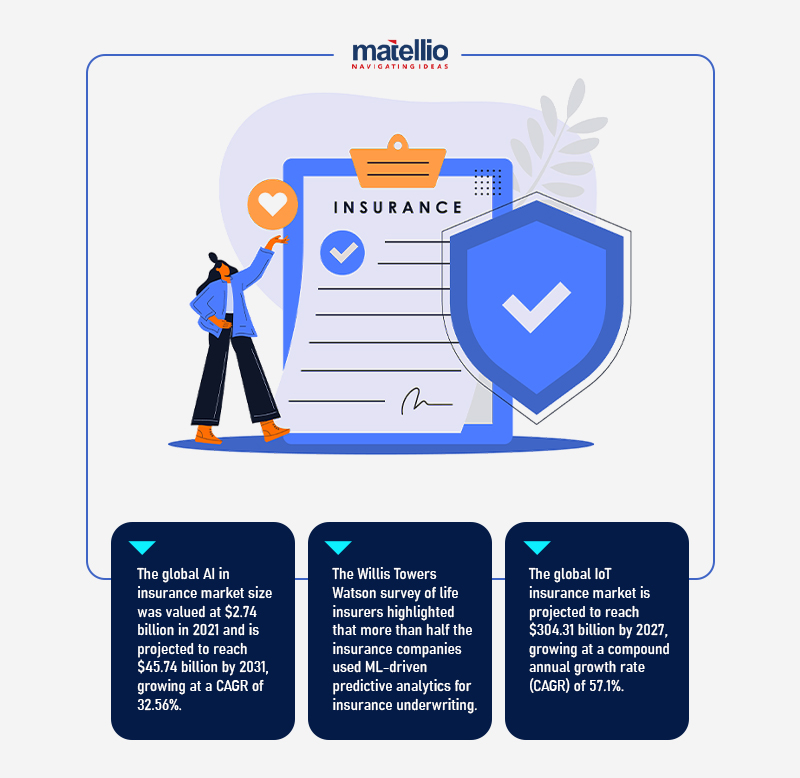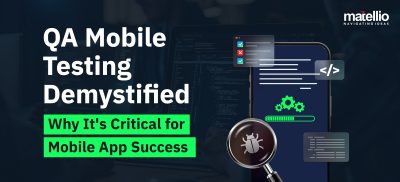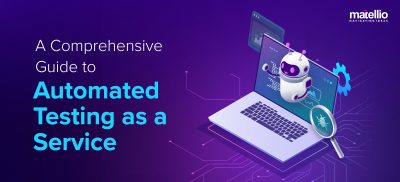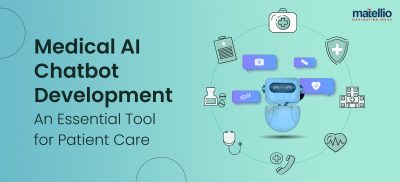
Nowadays, with the world going digital, many cutting-edge technologies have become sparks in everyone’s eyes, igniting the dreams of people all around. Machine learning, artificial intelligence, and deep learning have revolutionized the way we process and analyze data. Whether we talk about healthcare, finance, automotive, natural language processing, or even image recognition, today, technology is everywhere.
And, out of all these, deep learning in insurance is the one emerging as a GAME CHANGER.
This is not just another buzzword; deep learning is bringing change, innovation, and efficiencies to the insurance landscape, ultimately enhancing the experience of providers and policyholders.
A Deloitte study found that deep learning is one of the most important technologies that insurers are investing in.
Deep learning isn’t just about futuristic robots and science fiction fantasies; it’s about harnessing the power of data, algorithms, and neural networks to make insurance smarter, more efficient, and more customer-friendly than ever before.
In this blog, we’ll take a closer look at how deep learning is making a mark in the world of insurance.
What is Deep Learning in Insurance?
“Deep Learning” has all its meaning: how deeply it reads all the data and acts accordingly. It is a type of artificial intelligence (AI) that uses artificial neural networks to learn from data. It basically functions like a human brain, but in a faster way, learning complex patterns from large datasets.
Let’s explain to you in simple terms,
It’s like having an exceptionally sharp pair of eyes that can look over your vast amounts of data and check for complex patterns and insights that a human eye alone cannot see.
Remember those times when we used to refine through piles of paperwork, claims, customer records, and market trends and make informed decisions? Deep learning algorithms can do this at an incredible speed and with a high degree of accuracy!
The best thing about having deep learning is that they’re designed to learn and adapt, becoming more proficient over time. So, you can advance with the world.
If we talk about the insurance world, deep learning can find out risks, streamline claims processing, and improve customer service. They can also help you in detecting fraud by spotting if there are any unusual patterns in claims.
Deep learning will work like a smart assistant for insurance companies like yours, assisting you in making data-driven decisions that will benefit both your business and your customers.
Deep learning is a powerful technology that will transform your insurance industry, making it more customer-centric, efficient, and cost-effective. Adopting such digital transformation services to your business early will be well-positioned to succeed in the future.
Deep Learning in Insurance: Some Interesting Facts
Deep learning in insurance has experienced phenomenal growth in recent years, all because of the rise in data availability and advancements in artificial intelligence. Let’s see how effective deep learning is becoming:

Underwriting
Deep learning is changing the landscape of underwriting processes. Insurers are using deep learning models to analyze large datasets and accurately analyze risks. This has led to improved risk selection, reduced loss ratios, and enhanced profitability.
Claims Processing
Deep learning algorithms are used to automate claims processing. They can quickly scan receipts, extract relevant information, and even analyze fraudulent claims. This speeds up payment processing and reduces fraud losses.
Customer Service
Chatbots and virtual assistants powered by deep learning are driving customers in the insurance industry. These AI-powered interfaces provide immediate answers to customer questions, assist with policy questions, and improve the overall customer experience.
Also Read- How to Develop AI Customer Service Software?
Personalization
Deep learning enables insurance companies to create their own policies and pricing based on individual customer behaviors and risk factors. This customization increases customer satisfaction and loyalty.
Scams Detection
Fraudulent insurance claims are a major concern. Deep learning models can analyze historical data to identify unusual patterns, allowing insurance companies to detect and prevent fraudulent activity.
Now, you must have known how impactful deep learning can be to your insurance business. As technology continues to evolve, its role in insurance is expected to expand even further. So, go for custom insurance software development services today to take your business to the next level.
Let’s hop on to the features now.
Features of Deep Learning in Insurance
Deep learning in insurance will provide you with quite a number of features that will completely transform the way your industry works and serves its customers. Let’s see some of the important ones:
 Enhanced Risk Assessment
Enhanced Risk Assessment
Deep learning in insurance will let you to better understand and assess risks. Imagine it as a super-smart detective who digs deep into data to uncover hidden insights. It analyzes a vast amount of information, like historical claims data, market trends, and customer behavior, to make more accurate predictions about risks associated with policies.
 Swift Claims Processing
Swift Claims Processing
Time is money! Deep studying will save it for you with the aid of dashing up the claim’s process, i.e., it could quickly evaluate and process claims files. It can also spot irregularities and potential fraud, if there may be any, ensuring that legitimate claims are paid out faster whilst decreasing fraudulent ones.
 Personalized Policies
Personalized Policies
Personalization is what makes your customers feel connected. Via deep learning, you can make your insurance business extra personalized. How? It will analyze your users’ specific needs and risk profiles and accordingly offer them customized insurance policies and pricing. In this way, your customers will be getting the right coverage that suits them the best.
 Fraud Detection
Fraud Detection
Deep learning detects any fraudulent activity just like a vigilant watchdog. It can spot suspicious patterns; for example, if there is more than one claim with the same incident, it raises red flags. This will help you to save money by preventing fraudulent payouts.
 Improved Customer Service
Improved Customer Service
You can also enhance customer service via deep learning in insurance. Think of it as a friendly and knowledgeable assistant available 24/7 to answer questions from your users, assist them with policy inquiries, and provide them with the information they need. This improves customer satisfaction as well as convenience.
 Usage-Based Insurance
Usage-Based Insurance
Deep learning is changing the way car insurance works. It can analyze data from connected devices in vehicles, like telematics sensors, to assess how people drive. This allows insurers to offer usage-based policies, where safe drivers pay less.
With great power comes great responsibility. Deep learning in insurance also raises ethical questions about fairness, bias, and transparency. So, you should ensure that all the AI development services are used ethically and don’t discriminate against certain groups of people.
Insurance companies that embrace deep learning gain a competitive edge. It’s like having a secret weapon that helps them make smarter decisions, price policies more accurately, and stay ahead of the competition. So, get deep learning today for your insurance business and feel the change yourself.
Now, let’s start with the most awaited section of the blog.
How to Implement Deep Learning in Insurance: Step-by-Step Process
You must have seen now how implementing deep learning in insurance can be the best investment for you. It can offer a wide range of benefits that significantly enhance your overall business operations. Let’s delve into some of the major pointers to consider while implementing deep learning in your insurance business:
Define Objectives and Use Cases
The first thing that you should consider before implementing deep learning for your business is why you actually need it in the first place. You should be clear about the specific objectives and use cases where deep learning can bring value to your insurance operations, like risk assessment, claims processing, fraud detection, and customer service.
Data Collection and Preparation
Now that you are clear about your goals start gathering a good amount of relevant data for your chosen use case. You can collect historical insurance data, customer information, claims records, and external data sources like weather or economic indicators.
Clean and preprocess the data to ensure it is suitable for training deep learning models. Check for any missing values outliers, and normalize data as needed.
Choose the Best Team
The third and most important step is to choose a dedicated development team or hire experts from us to get deep learning for your insurance business, as it is the next-gen technology that needs professionals with years of experience to get you the best solutions for your business.
Model Development
Now that you are ready with your team let’s start with developing deep learning models based on your use case. Depending on the task, you may use convolutional neural networks (CNNs), recurrent neural networks (RNNs), or more advanced architectures like transformers.
You can experiment with different model architectures, hyperparameters, and optimization techniques to achieve the best results.
You can refer to the table below to select the right tech stack to build, train, deploy, and maintain deep learning models.
| Category | Tech Stack Options |
|---|---|
| Programming Languages | Python |
| Deep Learning Frameworks | TensorFlow, PyTorch, Keras |
| Hardware Acceleration | Graphics Processing Units (GPUs), Tensor Processing Units (TPUs) |
| Data Management | Data Warehouses, Data Lakes |
| Data Preprocessing | Pandas, NumPy, Scikit-learn |
| Model Deployment and Serving | Docker, Kubernetes, Flask or FastAPI, TensorFlow Serving, PyTorch Serve |
| Cloud Platforms | Amazon Web Services (AWS), Google Cloud Platform (GCP), and Microsoft Azure |
| AutoML Tools | Google AutoML, Azure Machine Learning, and H2O.ai |
| Monitoring and Logging | TensorBoard, ELK Stack (Elasticsearch, Logstash, Kibana) |
| Model Explainability and Fairness | LIME and SHAP, Fairlearn |
Selecting the appropriate technology stack depends on your specific use cases, infrastructure, and budget. It’s essential to consider factors such as scalability, ease of use, and integration capabilities when building your deep learning tech stack for insurance.
You can also contact us for technology consulting services if you lack expertise in the same.
Data Splitting and Training
Now, split your data into training, validation, and test sets to check on the model performance accurately. Train your deep learning model on the training data, fine-tuning it based on validation results. Monitor training progress and use techniques like early stopping to prevent overfitting.
Assess the model’s performance using the test dataset and relevant evaluation metrics. Common metrics include accuracy, precision, recall, F1-score, and area under the ROC curve (AUC).
Integration with Existing Systems
Integrate the trained deep learning model into your insurance systems and workflows. This may involve creating APIs or incorporating the model into your claims processing or underwriting processes.
Continuously monitor the model’s performance in a production environment. Implement mechanisms for retraining the model periodically to adapt to changing data patterns.
Establish a feedback loop for continuous improvement. Gather feedback from users and stakeholders to refine and enhance the deep learning implementation over time.
Scaling and Expansion
As you gain experience and see positive results, consider expanding deep learning applications to other areas within the insurance company.
Remember that implementing deep learning in insurance is an iterative process that requires collaboration between data scientists, domain experts, and IT teams. It’s essential to start with well-defined objectives and use cases and to continuously assess and refine your models for optimal performance and value delivery.
Why Choose Matellio for Implementing Deep Learning in Your Insurance Business?
In an era where the competition is intense and driven by next-gen technology, you need to leverage the best enterprise solutions. It will help in paving a successful path for your business growth. Choosing to invest in deep learning for your insurance business can be a great idea, but you need to partner with the best development company to get perfection.
This is where Matellio steps in!
Matellio is a well-known leading AI development company helping businesses of all sizes and various industries to implement advanced technologies. We prioritize security throughout the process, implementing industry best practices for data encryption, secure authentication, and protection against potential vulnerabilities.
If you are confused about our services and wish to learn about the implementation cost, time estimation, or any other information relevant to your project, please feel free to contact us.

 Enhanced Risk Assessment
Enhanced Risk Assessment Swift Claims Processing
Swift Claims Processing Personalized Policies
Personalized Policies Fraud Detection
Fraud Detection Improved Customer Service
Improved Customer Service Usage-Based Insurance
Usage-Based Insurance



